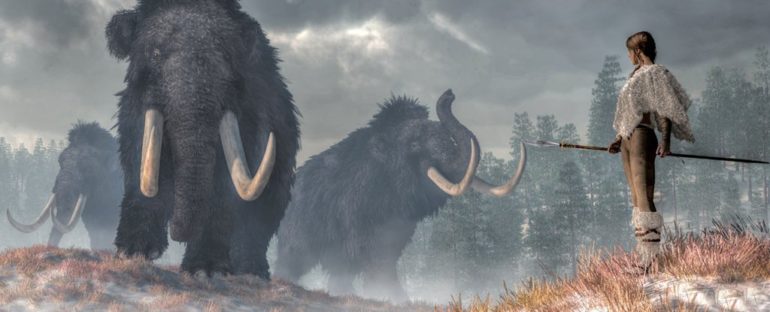Legends of the last ice age, woolly mammoths played a pivotal ecological role in the grassy tundra they once roamed. So much so, that scientists have even proposed resurrecting them in an attempt to mitigate some of the damage that our way of life has inflicted on the planet.
Glacial melts have defrosted incredibly well preserved specimens, with their DNA giving us new perspectives on their extinction. But as mammoths are 4,000 years long gone, many mysteries remain about how they lived their daily lives.
Scientists have now analyzed chemical isotopes in the remains of one such creature, mapping out its biography as it wandered the Arctic fringe.
Today, the lands known as Beringia are made up of Siberian tundra, Alaskan ice, or the seafloor between the ocean that separates the continents.
When the beast in this latest study walked the land at the end of the Pleistocene, more than 17,000 years ago, the range was a vast landscape of grasslands that offered a refuge from the worst of the icy climate.
The studied remains – a 1.7-meter-long tusk – did not disappoint.
The mammoth, revealed to be male via an analysis of genetic material in the tusk, appears to have spent its entire life adventuring across the tundra, traveling far enough to have almost circled Earth twice during its 28 years of life.
“From the moment they’re born until the day they die, they’ve got a diary and it’s written in their tusks,” said University of Alaska paleontologist Pat Druckenmiller. “Mother Nature doesn’t usually offer up such convenient and life-long records of an individual’s life.”
Like rings of a tree, each tusk layer records another page of the mammoth’s life, written in the language of atoms.
To decipher this diary, University of Alaska paleoecologist Matthew Wooller, Druckenmiller, and colleagues used ~340,000 measurements of strontium isotopes that the ancient mammoth incorporated into its tusks from food and the environment.
Split mammoth tusk, stained blue to see the growth layers. (JR Ancheta/University of Alaska Fairbanks)
Unique ratios between the isotopes of strontium (87Sr/86Sr) provide fingerprints of locations that change little across the millennia, the researchers explain. Alaskan isotope location data has been mapped from the teeth of rodents that generally stay in one location their entire life.
Comparing the mammoth’s strontium and oxygen isotope data to this map, the researchers were able to obtain information on the mammoth’s movements, down to the incredible resolution of a week.
“It’s not clear-cut if it was a seasonal migrator, but it covered some serious ground,” said Wooller. “It visited many parts of Alaska at some point during its lifetime, which is pretty amazing when you think about how big that area is.”
The mammoth seems to have frequented different areas during different stages of its life. The 10 cm (approx. 4 inch) tusk tip shows it spent the first year of its life in the Yukon River basin in interior Alaska, moving very little.
Then as a juvenile between 2 to 16 years old (the next ~75 cm of tusk), it roamed a larger range (yellow area on the map below). After this the isotopes showed even higher variation.
This is consistent with the youngster traveling as part of a herd, before roaming more extensively as an adult bull, just like we see in elephants today.

The ancient mammoth spent its final years in one small region in northern Alaska, where it sadly may have succumbed to starvation. There, on Alaska’s North Slope, near the Arctic Circle, its massive body lay resting until the remains, including both tusks, mandible with teeth, and skull fragments, were excavated 17,000 years later.
“Evidence for starvation includes a substantial increase in 15N values and a corresponding decrease in 13C values,” the researchers explained in their paper.
The last woolly mammoths suffered a genomic meltdown on their way to extinction. They were confined to relatively small islands, so their ability to travel was much more limited compared to the male studied here.
But the extensive range of the mainland Beringia mammoths may have made them vulnerable to more stresses, from the warming climate to human predation, which together could have led to a faster extinction, Wooler and colleagues speculate.
“The Arctic is seeing a lot of changes now, and we can use the past to see how the future may play out for species today and in the future,” Wooller said.
“Trying to solve this detective story is an example of how our planet and ecosystems react in the face of environmental change.”
This research was published in Science.



